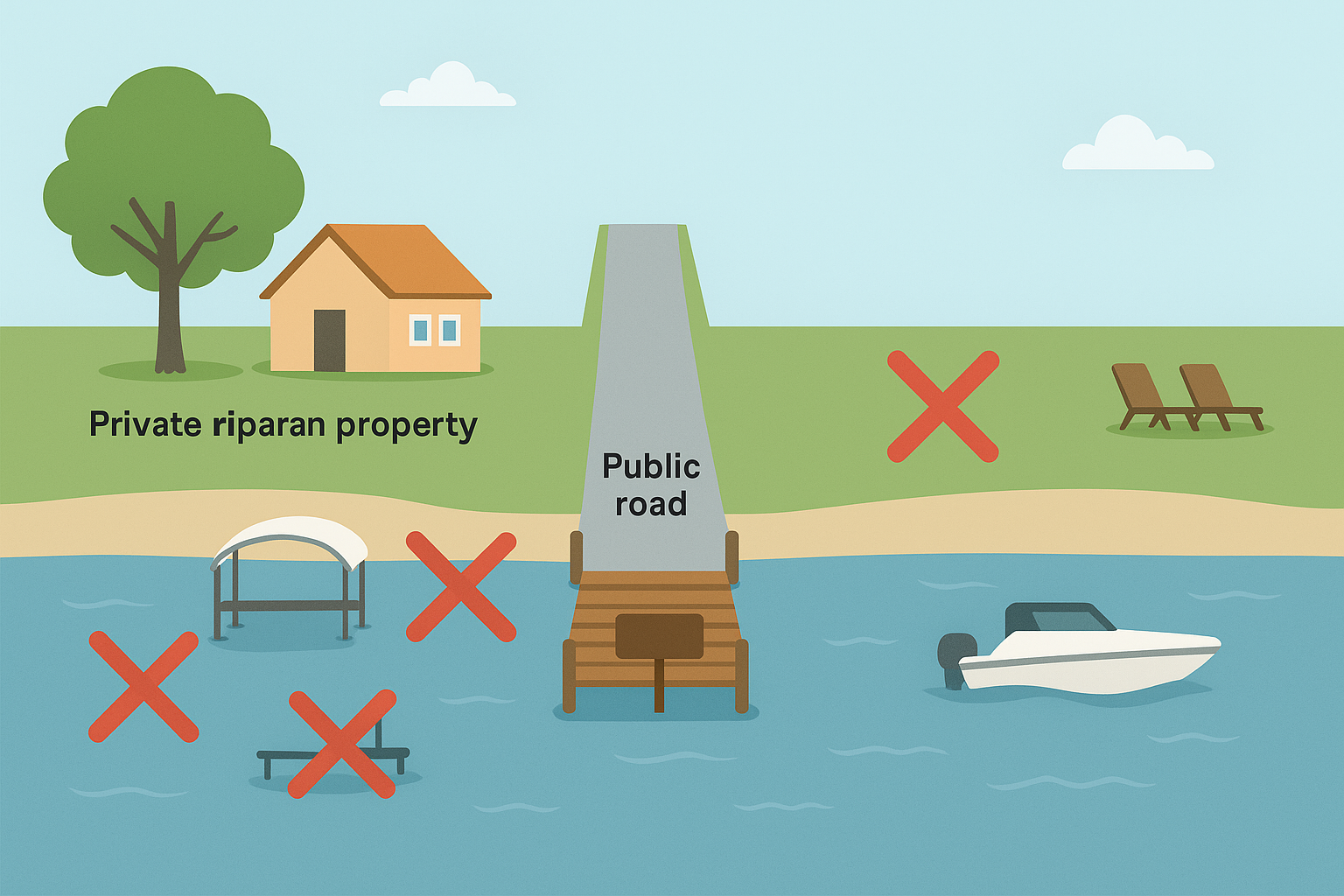Lessons on Road Ends and the Ongoing Legal Uncertainty
In Michigan, public road ends that terminate at inland lakes or streams—often called “down roads” in platted subdivisions—have long created legal disputes. The general rule recognized by the courts is that when a developer dedicates a public road that runs all the way to the water’s edge, the public gains a right of access to the surface of the water. However, that access is limited. It does not automatically grant the right to use the road end as a beach, to permanently moor boats, or to install private docks.
In 2012, the Legislature passed Public Act 56, now codified at MCL § 324.30111b, in an effort to clarify and tighten these restrictions. PA 56 prohibits a number of activities at public road ends unless specifically authorized by a deed, dedication, recorded easement, or a court order. These prohibited activities include installing boat hoists, anchoring or mooring a boat overnight, and engaging in conduct that blocks or interferes with ingress or egress to the lake. The Act also bans the construction or use of a dock or wharf at a public road end, except for a single seasonal dock authorized by the local government and permitted under state law. Violation of these rules is a misdemeanor, with fines of up to $500 per day, and local governments may pursue enforcement actions in addition to criminal prosecution.
Even with PA 56 in place, uncertainty has remained. Questions persist about how the law interacts with equitable doctrines like prescriptive easements or long-standing customary use, particularly where backlot owners or neighborhood associations have historically treated a road end as their de facto waterfront. Other disputes arise around the meaning of “obstruction” to ingress and egress, a term the statute leaves undefined. In practice, this vagueness has led to conflicts between riparian owners, members of the public, and local governments.
OLC's leading property rights attorney Philip L. Ellison recently litigated and won a significant case on these very issues — Bartlett v. City of Lake City. In that case, the dispute involved whether the public could place docks and other structures at the end of a platted road on Lake Missaukee. The court sided with Ellison’s clients, reaffirming that road ends provide access to the water’s edge but do not transform into community marinas or beaches. The Bartlett decision underscores both the protections given to riparian owners and the narrowness of the public’s rights at road ends, while also highlighting the need for careful analysis of each plat dedication and the surrounding law.

Because these rules involve overlapping statutes, local enforcement, and evolving court precedents, property owners and community associations should not rely on assumptions or informal practices. Each situation demands a close review of the plat dedication, local ordinances, and current law. With the continuing uncertainties in this area, particularly after PA 56, consulting with an experienced attorney is the best way to protect riparian rights and avoid conflicts over road ends and shared access.